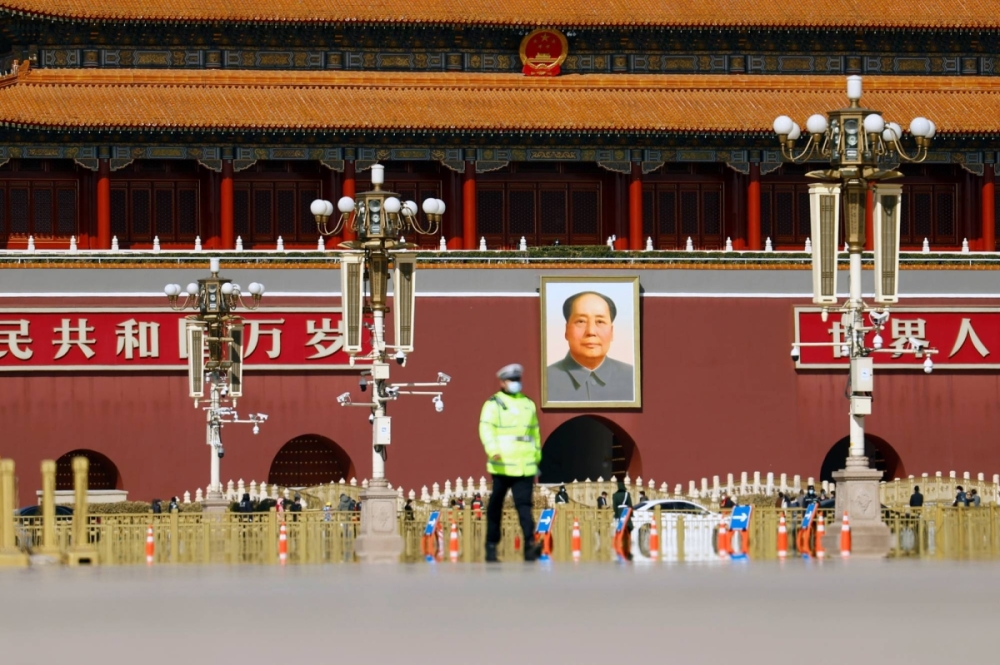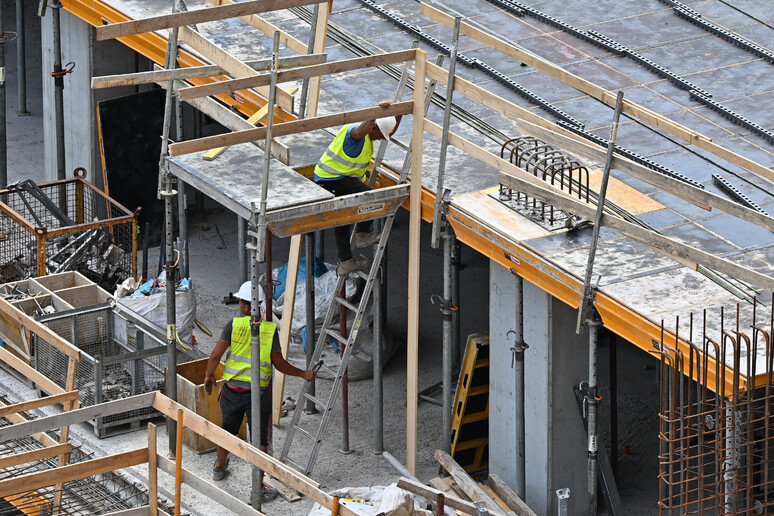Xinhua
2024-12-22
Two US Navy pilots ejected safely after their fighter jet was shot down Sunday over the Red Sea in an apparent "friendly fire" incident, said the US military.
"The guided-missile cruiser USS Gettysburg, which is part of the USS Harry S. Truman Carrier Strike Group, mistakenly fired on and hit the F/A-18," US Central Command (CENTCOM) said in a statement.
Both pilots were recovered alive after ejecting from their stricken aircraft, with one suffering minor injuries, according to the statement.
The apparent friendly fire incident came the same day US forces conducted airstrikes on a missile storage facility and a command-and-control facility reportedly operated by the Houthis group within Sanaa, Yemen.
"CENTCOM forces conducted the deliberate strikes to disrupt and degrade Houthi operations, such as attacks against US Navy warships and merchant vessels in the Southern Red Sea, Bab al-Mandeb, and Gulf of Aden," CENTCOM said in a separate statement.
US forces also shot down multiple Houthi one-way attack drones and an anti-ship cruise missile over the Red Sea, it said.
The US military operations came hours after the Houthis claimed responsibility for a ballistic missile attack on central Israel, which injured at least 20 Israelis in Tel Aviv.
Since November 2023, the Houthis have been carrying out rocket and drone attacks on Israeli cities and disrupting "Israeli-linked" shipping in the Red Sea.
In response, the US-led navy coalition stationed in the area has been conducting regular air raids on Houthi targets since January in a bid to deter the armed group.
Source: Xinhua Editor: Zhang Long
Two US Navy pilots were recovered alive after their aircraft was shot down over the Red Sea early on Sunday in what the US military described as "an apparent case of friendly fire". The military earlier said it struck Houthi targets in Yemen, hours after the Iran-backed militia fired a missile at Israel's commercial hub Tel Aviv.
Issued on: 22/12/2024 -
By: NEWS WIRES

Two US Navy pilots were shot down Sunday over the Red Sea in an apparent “friendly fire” incident, the US military said, marking the most serious incident to threaten troops in over a year of America targeting Yemen's Houthi rebels.
Both pilots were recovered alive after ejecting from their stricken aircraft, with one suffering minor injuries. But the shootdown underlines just how dangerous the Red Sea corridor has become over the ongoing attacks on shipping by the Iranian-backed Houthis despite US and European military coalitions patrolling the area.
The US military had conducted airstrikes targeting Yemen’s Houthi rebels at the time, though the US military’s Central Command did not elaborate on what their mission was and did not immediately respond to questions from The Associated Press.
The F/A-18 shot down had just flown off the deck of the USS Harry S. Truman aircraft carrier, Central Command said. On Dec. 15, Central Command acknowledged the Truman had entered the Mideast, but hadn't specified that the carrier and its battle group was in the Red Sea.
“The guided missile cruiser USS Gettysburg, which is part of the USS Harry S. Truman Carrier Strike Group, mistakenly fired on and hit the F/A-18,” Central Command said in a statement.
From the military's description, the aircraft shot down was a two-seat F/A-18 Super Hornet fighter jet assigned to the “Red Rippers” of Strike Fighter Squadron 11 out of Naval Air Station Oceana, Virginia.
It wasn't immediately clear how the Gettysburg could mistake an F/A-18 for an enemy aircraft or missile, particularly as ships in a battle group remain linked by both radar and radio communication.
However, Central Command said that warships and aircraft earlier shot down multiple Houthi drones and an anti-ship cruise missile launched by the rebels. Incoming hostile fire from the Houthis has given sailors just seconds to make decisions in the past.

Since the Truman's arrival, the US has stepped up its airstrikes targeting the Houthis and their missile fire into the Red Sea and the surrounding area. However, the presence of an American warship group may spark renewed attacks from the rebels, like what the USS Dwight D. Eisenhower saw earlier this year. That deployment marked what the Navy described as its most intense combat since World War II.
On Saturday night and early Sunday, US warplanes conducted airstrikes that shook Sanaa, the capital of Yemen that the Houthis have held since 2014. Central Command described the strikes as targeting a “missile storage facility” and a “command-and-control facility,” without elaborating.
Houthi-controlled media reported strikes in both Sanaa and around the port city of Hodeida, without offering any casualty or damage information. In Sanaa, strikes appeared particularly targeted at a mountainside known to be home to military installations. The Houthis later acknowledged the aircraft being shot down in the Red Sea.
The Houthis have targeted about 100 merchant vessels with missiles and drones since the Israel-Hamas war in the Gaza Strip started in October 2023 after Hamas’ surprise attack on Israel that killed 1,200 people and saw 250 others taken hostage.
Israel’s grinding offensive in Gaza has killed more than 45,000 Palestinians, local health officials say. The tally doesn’t distinguish between combatants and civilians.
The Houthis have seized one vessel and sunk two in a campaign that has also killed four sailors. Other missiles and drones have either been
Both pilots were recovered alive, with one suffering minor injuries

Photo by: Bernat Armangue/AP
A fighter jet maneuvers on the deck of the USS Dwight D. Eisenhower in the Red Sea.
By: AP via Scripps News
Two U.S. Navy pilots were shot down Sunday over the Red Sea in an apparent “friendly fire” incident, the U.S military said, marking the most serious incident to threaten troops in over a year of America targeting Yemen's Houthi rebels.
Both pilots were recovered alive after ejecting from their stricken aircraft, with one suffering minor injuries. But the shootdown underlines just how dangerous the Red Sea corridor has become over the ongoing attacks on shipping by the Iranian-backed Houthis despite U.S. and European military coalitions patrolling the area.

AP This is a locator map for Yemen with its capitol
The U.S. military had conducted airstrikes targeting Yemen’s Houthi rebels at the time, though the U.S. military’s Central Command did not elaborate on what their mission was and did not immediately respond to questions from The Associated Press.
The F/A-18 shot down had just flown off the deck of the USS Harry S. Truman aircraft carrier, Central Command said. On Dec. 15, Central Command acknowledged the Truman had entered the Mideast, but hadn't specified that the carrier and its battle group was in the Red Sea.
“The guided missile cruiser USS Gettysburg, which is part of the USS Harry S. Truman Carrier Strike Group, mistakenly fired on and hit the F/A-18,” Central Command said in a statement.
RELATED STORY | Sailor dies after being 'lost overboard' in the Red Sea, US Navy says
From the military's description, the aircraft shot down was a two-seat F/A-18 Super Hornet fighter jet assigned to the “Red Rippers” of Strike Fighter Squadron 11 out of Naval Air Station Oceana, Virginia.
It wasn't immediately clear how the Gettysburg could mistake an F/A-18 for an enemy aircraft or missile, particularly as ships in a battle group remain linked by both radar and radio communication.
However, Central Command said that warships and aircraft earlier shot down multiple Houthi drones and an anti-ship cruise missile launched by the rebels. Incoming hostile fire from the Houthis has given sailors just seconds to make decisions in the past.
Since the Truman's arrival, the U.S. has stepped up its airstrikes targeting the Houthis and their missile fire into the Red Sea and the surrounding area. However, the presence of an American warship group may spark renewed attacks from the rebels, like what the USS Dwight D. Eisenhower saw earlier this year. That deployment marked what the Navy described as its most intense combat since World War II.
On Saturday night and early Sunday, U.S. warplanes conducted airstrikes that shook Sanaa, the capital of Yemen that the Houthis have held since 2014. Central Command described the strikes as targeting a “missile storage facility” and a “command-and-control facility,” without elaborating.
Houthi-controlled media reported strikes in both Sanaa and around the port city of Hodeida, without offering any casualty or damage information. In Sanaa, strikes appeared particularly targeted at a mountainside known to be home to military installations. The Houthis later acknowledged the aircraft being shot down in the Red Sea.
The Houthis have targeted about 100 merchant vessels with missiles and drones since the Israel-Hamas war in the Gaza Strip started in October 2023 after Hamas’ surprise attack on Israel that killed 1,200 people and saw 250 others taken hostage.
RELATED STORY | Yemen Houthi rebels fire missile at US warship in Red Sea
Israel’s grinding offensive in Gaza has killed more than 45,000 Palestinians, local health officials say. The tally doesn’t distinguish between combatants and civilians.
The Houthis have seized one vessel and sunk two in a campaign that has also killed four sailors. Other missiles and drones have either been intercepted by separate U.S.- and European-led coalitions in the Red Sea or failed to reach their targets, which have also included Western military vessels.
The rebels maintain that they target ships linked to Israel, the U.S. or the United Kingdom to force an end to Israel’s campaign against Hamas in Gaza. However, many of the ships attacked have little or no connection to the conflict, including some bound for Iran.
The Houthis also have increasingly targeted Israel itself with drones and missiles, resulting in retaliatory Israeli airstrikes.
USS Gettysburg Shoots Down an F/A-18 Fighter Over the Red

On Sunday morning, a U.S. Navy cruiser accidentally shot down a U.S. Navy fighter jet over the Red Sea, forcing the two pilots to eject. The friendly-fire incident occurred after a UAV and missile barrage launched by Yemen's Houthi rebels, according to U.S. Central Command.
Early Sunday morning, an F/A-18 Super Hornet launched off the deck of the carrier USS Harry S. Truman in the Red Sea. Shortly after the fighter took off, the crew of the USS Gettysburg - the carrier strike group's cruiser, typically the host of the air defense commander - misidentified the F/A-18 as a threat and shot it down. The pilots safely ejected and were retrieved, though one had minor injuries.
The incident occurred during a high-operational-tempo action off the coast of Yemen. On Saturday, before the accident, U.S. Central Command carried out a round of airstrikes against Houthi missile storage and command-and-control facilities in Sana’a, Yemen. During the operation on Saturday, CENTCOM forces also shot down multiple incoming Houthi suicide drones and one antiship cruise missile (ASCM) over the Red Sea. Both U.S. Air Force fighters and U.S. Navy F/A-18s were involved in that operation.
The friendly-fire incident highlighted the exceptionally challenging threat environment in the Red Sea, as well as the pressures on air defense personnel. In the tight confines of the Red Sea, U.S. Navy surface combatants often have a matter of seconds to correctly identify a Houthi missile threat and launch an interceptor in response. The risks of miscalculation are high, and this is not the first time that the allied response team in the Red Sea has made a mistake.
In February 2024, the German Navy frigate Hesse nearly shot down a U.S. drone aircraft over the Red Sea. The crew could not identify the drone and concluded that it posed a threat. Due to an unspecified "technical error," two missiles fired by Hesse at the drone both missed. "The case was resolved when it turned out that it wasn't a hostile drone, which only became clear in hindsight," German defense ministry spokesman Michael Stempfle said at the time.
USS Gettysburg is a Ticonderoga-class cruiser commissioned in 1991. She was fitted with a Cold War-era AN/SPY-1 multifunction air defense radar, which was upgraded during a nine-year-long inactivation and modernization period (2015-24). She is the only cruiser to complete repairs and deploy following the Navy's controversial service life extension program for the Ticonderoga-class.










